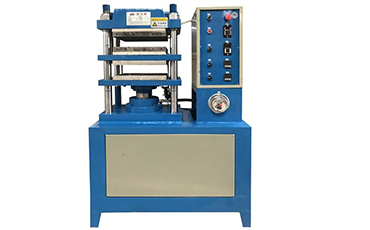In the realm of rubber manufacturing, the Vulcanizing Press stands as a transformative innovation that has redefined the way rubber products are produced. This essential machine plays a pivotal role in enhancing the properties of rubber, resulting in materials that are durable, resilient, and adaptable for a myriad of applications. In this article, we delve into the mechanics and significance of the vulcanizing press, shedding light on its crucial role in modern industry.
Vulcanization, a chemical process discovered by Charles Goodyear in the mid-19th century, involves treating raw rubber with heat and sulfur to create a network of strong cross-links within the material. This molecular transformation leads to improved elasticity, strength, and resistance to various environmental factors.
The vulcanizing press, a hydraulic or mechanical apparatus, facilitates this process by subjecting the rubber to controlled heat and pressure. This combination triggers the chemical reaction between sulfur and rubber molecules, resulting in the creation of a three-dimensional network. The precise control of temperature and pressure ensures that the material's properties are enhanced without compromising its structural integrity.

A typical vulcanizing press comprises two essential platens, which are the large metal plates responsible for applying pressure and heat to the rubber. The rubber material, often in the form of sheets or molded products, is placed between these platens. Once the press is activated, the platens close under the influence of hydraulic systems or mechanical mechanisms, exerting pressure on the rubber.
Simultaneously, the press's heating elements raise the temperature to the required level. The combination of pressure and heat catalyzes the vulcanization process, allowing sulfur atoms to form bridges between polymer chains. This results in a tighter molecular network, giving the rubber its characteristic strength and elasticity.
The vulcanizing press is indispensable across various industries. In tire manufacturing, for instance, vulcanization is essential to ensure that tires possess the necessary qualities to endure extreme road conditions. Rubber conveyor belts used in mining, industrial equipment, and even the fashion industry also rely on the vulcanizing press to guarantee their durability and reliability.
Moreover, the versatility of the vulcanizing press extends to consumer goods like footwear, gaskets, hoses, and various molded rubber products. Without this remarkable innovation, many of these items would lack the performance attributes that make them suitable for their respective applications.
The vulcanizing press stands as a testament to the marriage of science and engineering in the pursuit of superior rubber materials. Its ability to transform raw rubber into versatile, durable products has played a monumental role in shaping modern industry. As technology continues to advance, the vulcanizing press is likely to evolve further, enhancing the quality and range of rubber products that contribute to our daily lives.
Previous: The Role of a Rubber Refiner Mill
Next: